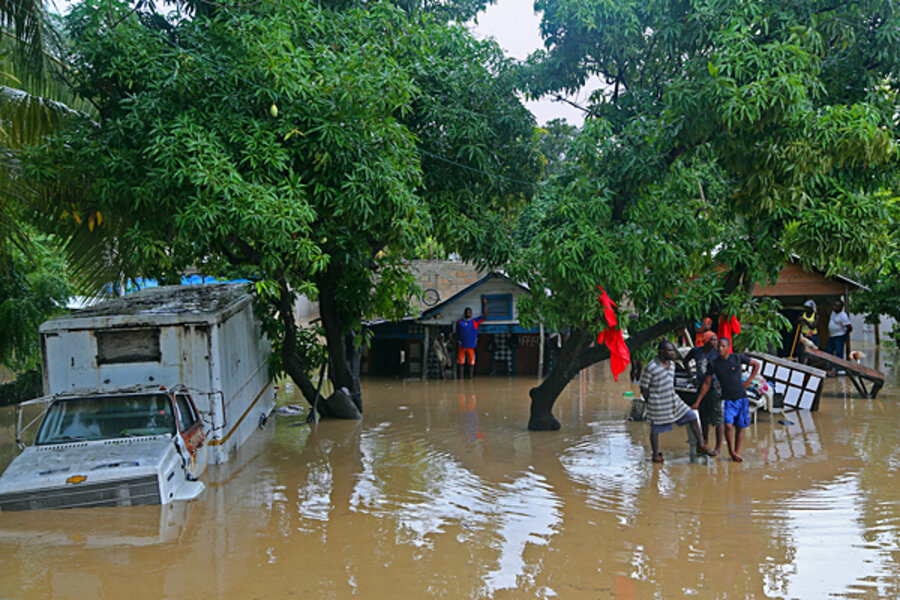Hurricane Sandy puts renewed pressure on food supply in Haiti
| Santo Domingo, Dominican Republic
Before turning its sights on the United States, Hurricane Sandy left a fresh disaster in Haiti, killing dozens and flooding cities and farmland. The storm set off fears of renewed challenges, including spiking food prices and a new cholera outbreak.
Sandy lingered over Haiti for three days, dumping sheets of rain on a flood-prone country where some 370,000 survivors of the January 2010 earthquake still live in makeshift homes and tents.
Government officials said at least 52 people died and 15 were still missing after the rains swamped wide swaths of land, particularly in the south, an important crop-growing region. News agencies reported that at least 18,000 people were in temporary shelters.
“In and around the [southern] city of Les Cayes, there is flooding everywhere,” says Pélèg Charles, a spokesman for the charity Oxfam UK, from his office in the capital Port-au-Prince. “It’s disastrous.… But we won’t know how bad it really is for several days.”
Contaminated water and devastated crops
Mr. Charles says that Oxfam has already received reports of some 150 new cases of cholera since the storm pulled out of the Caribbean this weekend. “We will not know for five to seven days if there is a new outbreak,” he says, “but we’re very worried about the spread.”
Cholera can spread quickly in contaminated water, and has killed more than 7,000 Haitians and sickened hundreds of thousands others since an outbreak began in October 2010.
Sandy was the second deadly storm to hit the country since late August, when Hurricane Isaac killed at least two dozen.
“Most of the agricultural crops that were left from Hurricane Isaac were destroyed during Sandy,” Prime Minister Laurent Lamothe told Reuters. At least a dozen bridges were destroyed and a key route that connects Haiti and the Dominican Republic was severely damaged, according to the government.
The impact on food security is a top concern for government officials. Recent spikes in food costs have contributed to social unrest in recent months, marked by nationwide demonstrations to protest double-digit rises in the costs of staples like rice and cooking oil.
'No roof to protect you'
Officials have yet to estimate the financial damage Sandy caused, but, Lamothe said, “The economy took a huge hit … even by international standards.” He told the news agency that the government was planning to appeal for international funds.
Kysseline Cherestal, a senior policy analyst for the charity ActionAid USA, which works in Haiti, says many of those whose homes were damaged by Sandy have also been without work for days.“Not only have they lost their tents or had their homes damaged, but they were not able to work so they lack the means to buy necessities,” Ms. Cherestal says. The charity is responding with emergency food rations and sanitation kits.
Cherestal, who spoke from rain-soaked Washington, D.C., says “things are very dire in Haiti right now.
“Imagine living through this storm with no roof to protect you from the rain and mud. That’s what people in Haiti are suffering through.”





